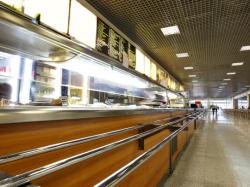Creative Solutions To Ending School Food Waste
September 2, 2014 | 1 min to read

Americans waste enough food every day to fill a 90,000 seat football stadium. Approximately one-third of all food is wasted at the retail and consumer levels. While research has shown that food wasted by children is similar to the rest of the U.S. population, there are many ways schools can reduce food waste and teach students about the impact it has on the environment and in their community.
At Chesterbrook Elementary School in McClean, VA, every student learns how to separate waste into categories like recyclables, food to be donated, upcycling bins, and general trash. The school’s Eco Team, run by sixth graders, ensures their fellow students are putting waste into the correct bin. The team then collects, weighs, categorizes, and places the food to be donated into separate refrigerators, provided by the Food Bus, a non-profit organization that works with schools to donate food that would otherwise go to waste.
At the end of the week, PTA members or community volunteers deliver the food to the local food pantry. In the 2013-2014 school year, the 12 schools that work with the Food Bus provided 13,502.6 pounds of food to their local food pantries. These donations included packaged peanut butter and jelly sandwiches, bananas and apples, yogurt, string cheese, containers of apple sauce and sliced peaches, granola bars, and cartons of milk. The milk is especially welcome by food pantries since they lack other reliable sources for the product.
To read the rest of the story, please go to: USDA
